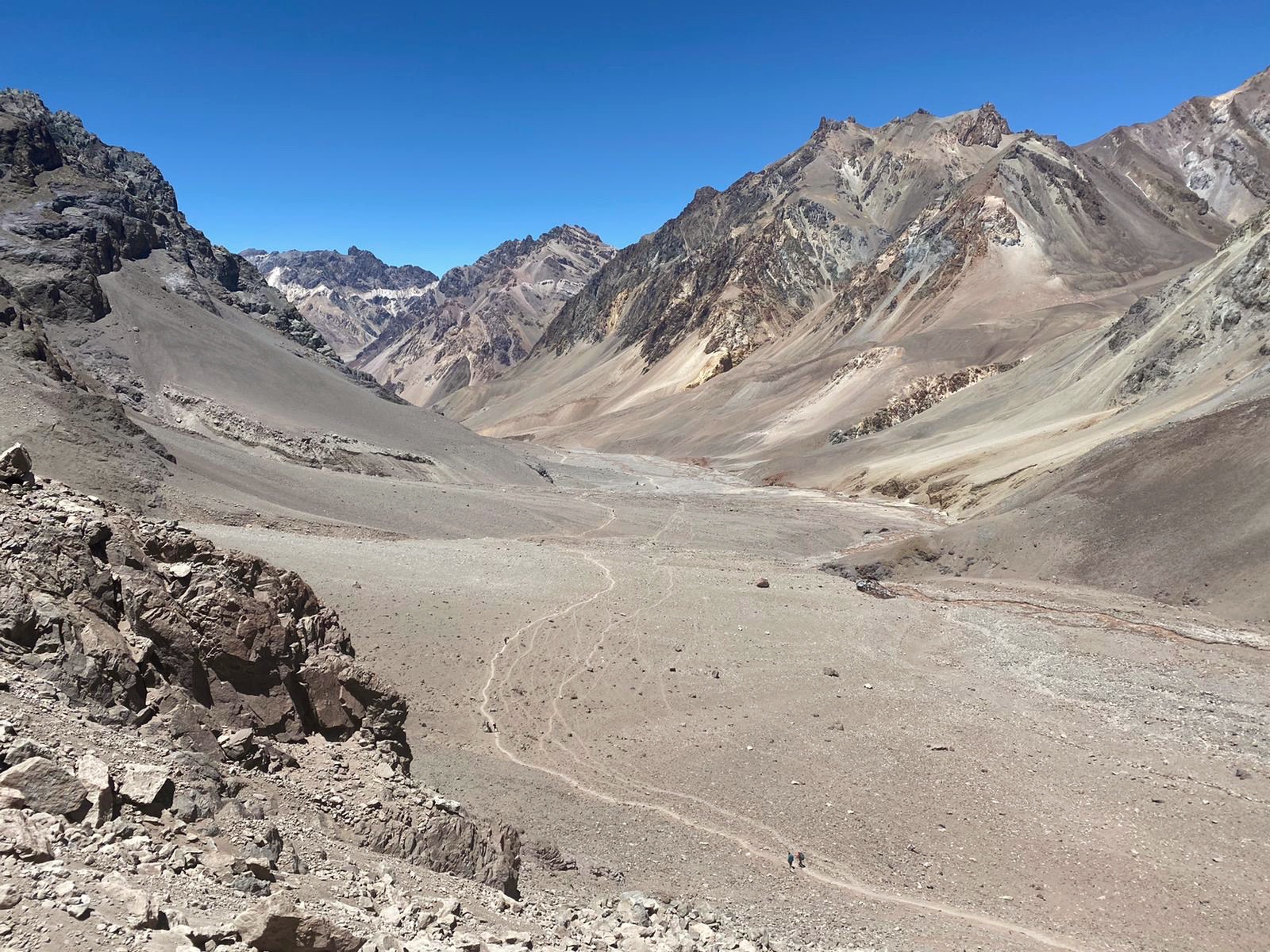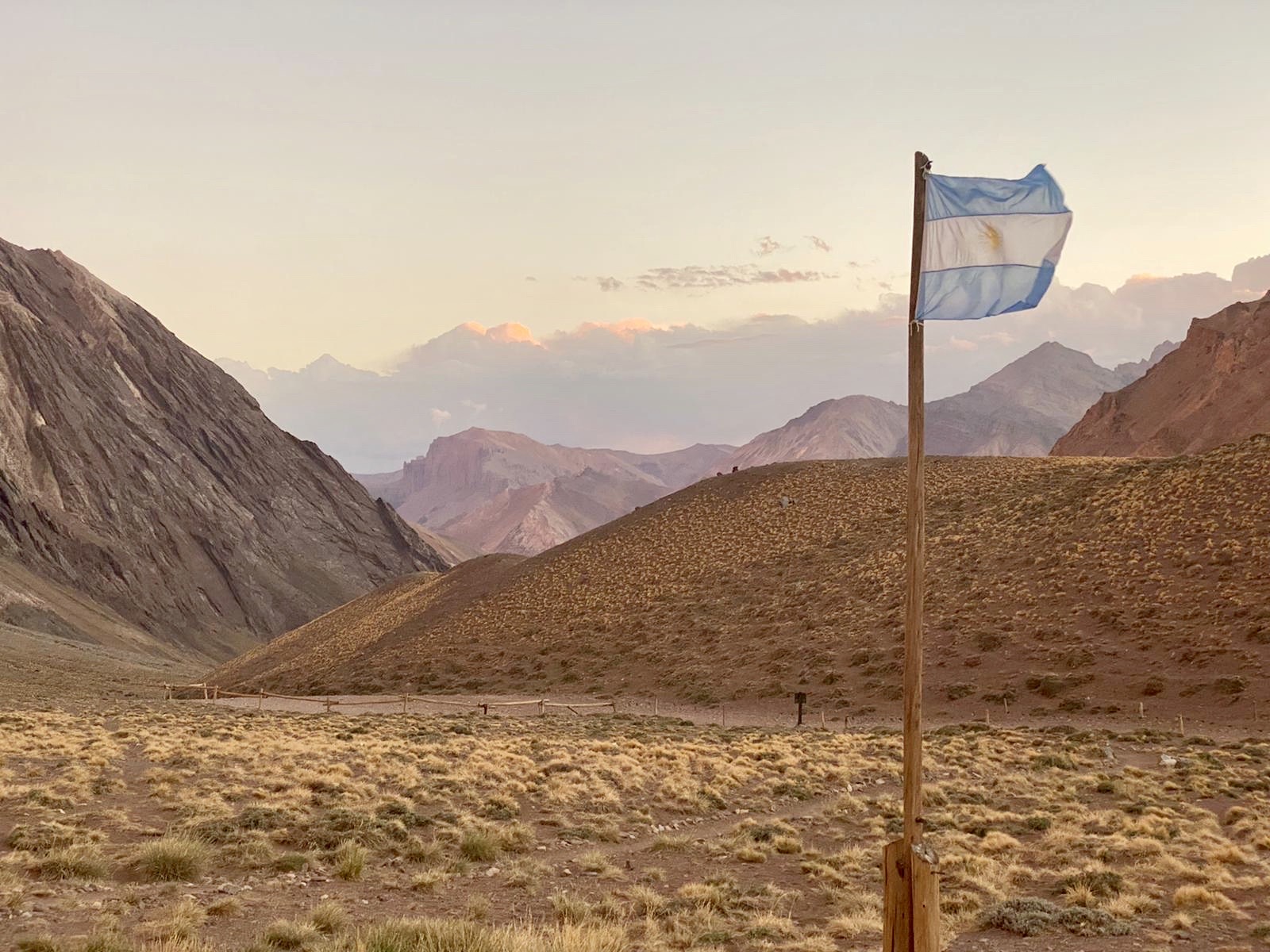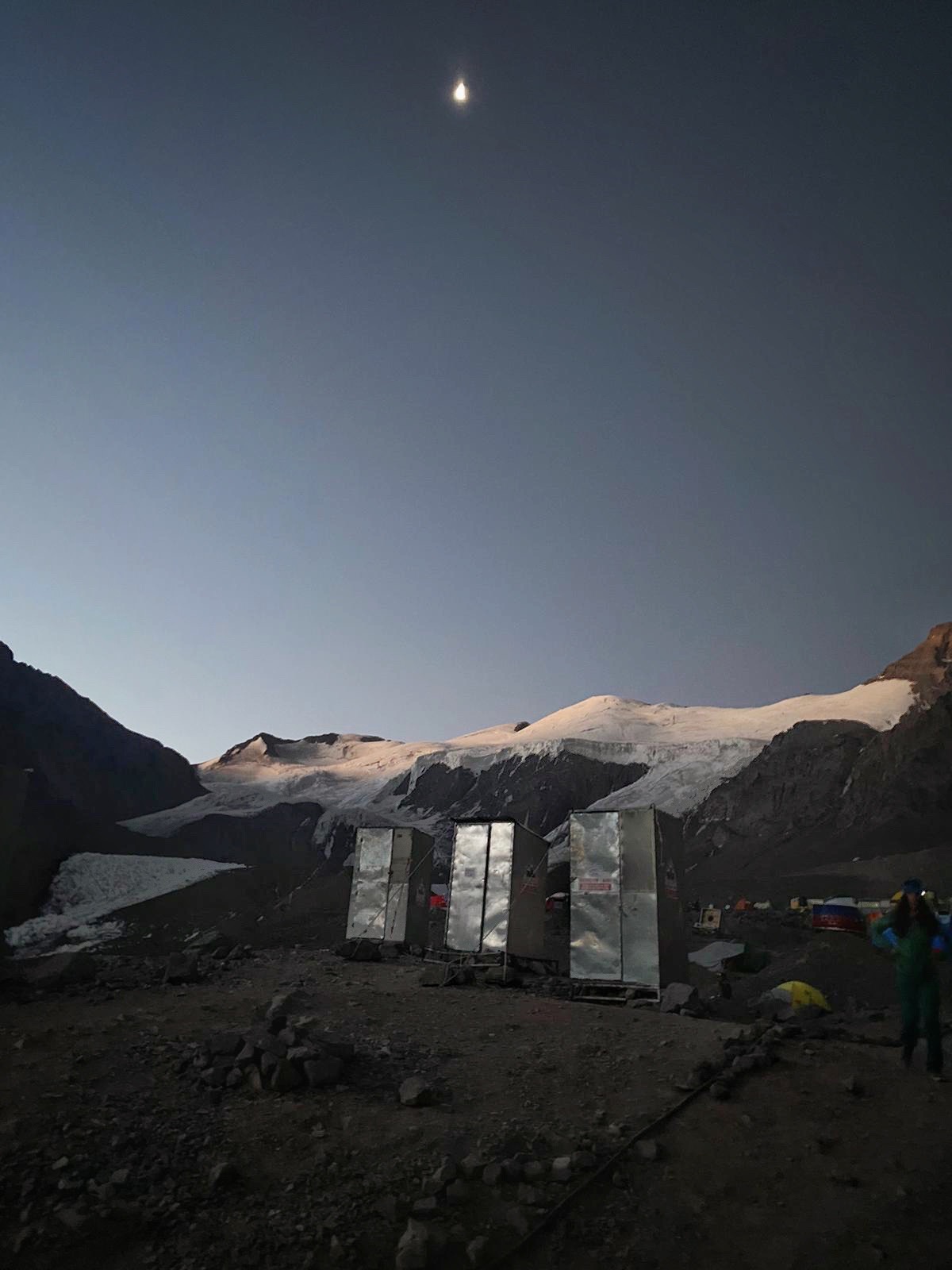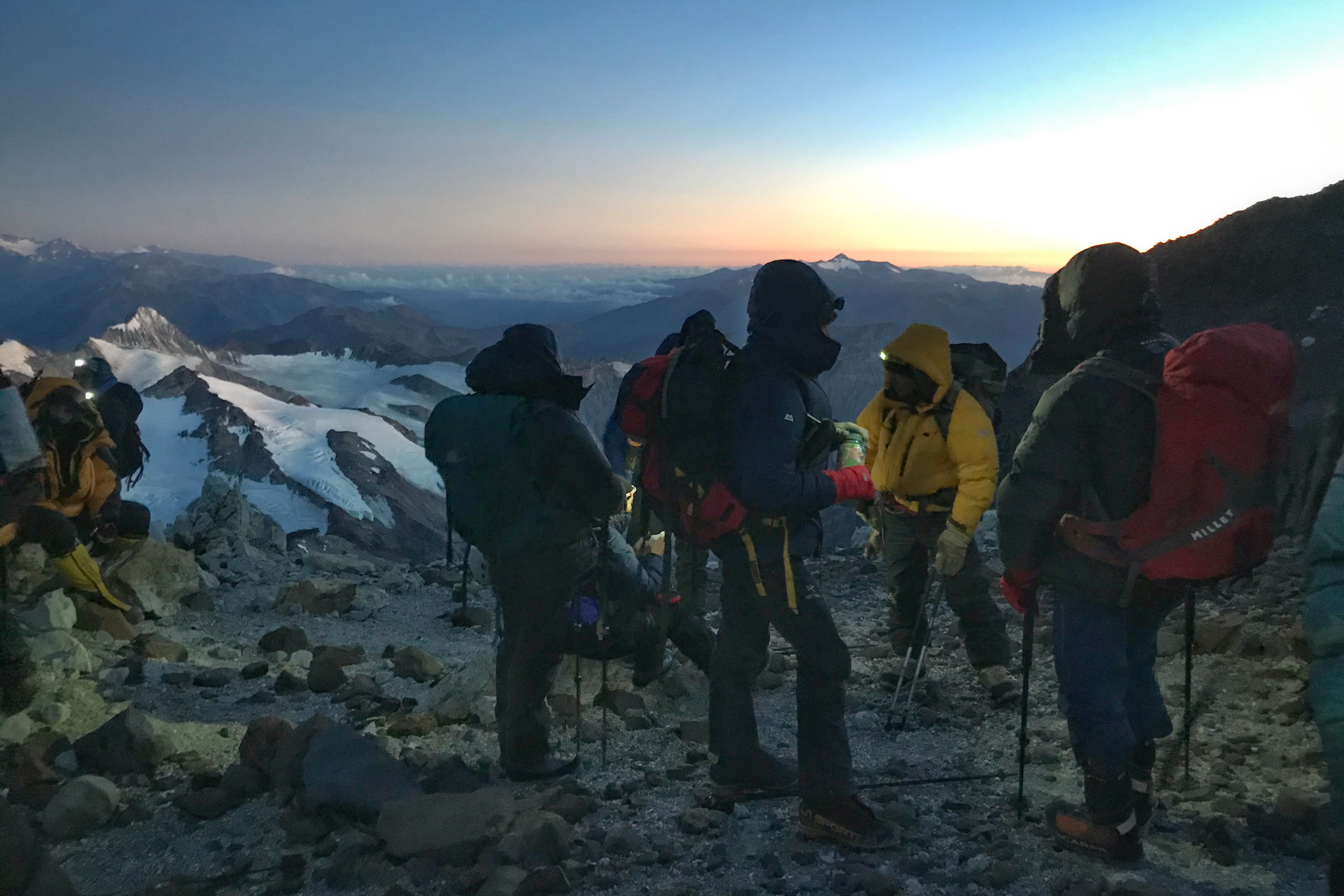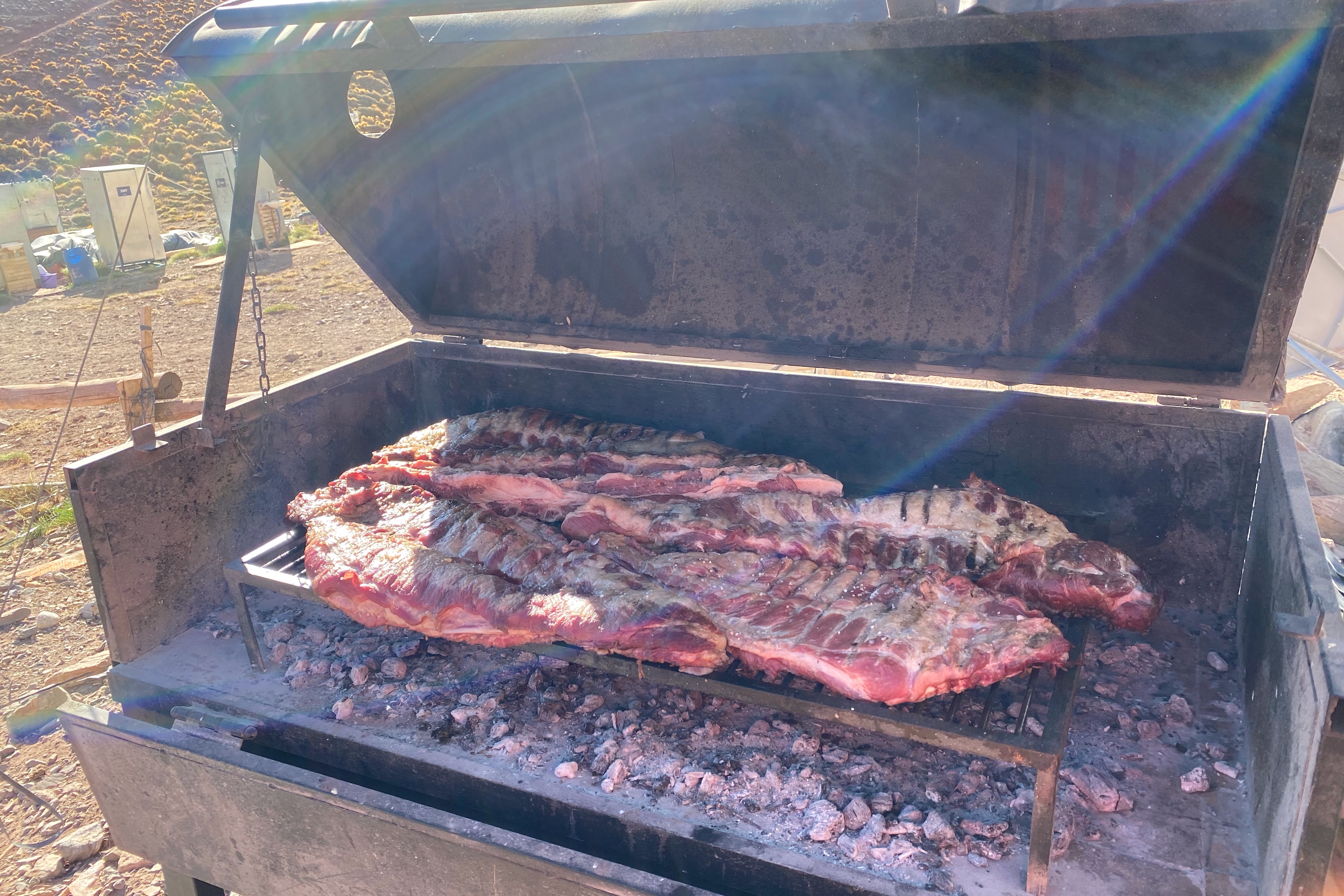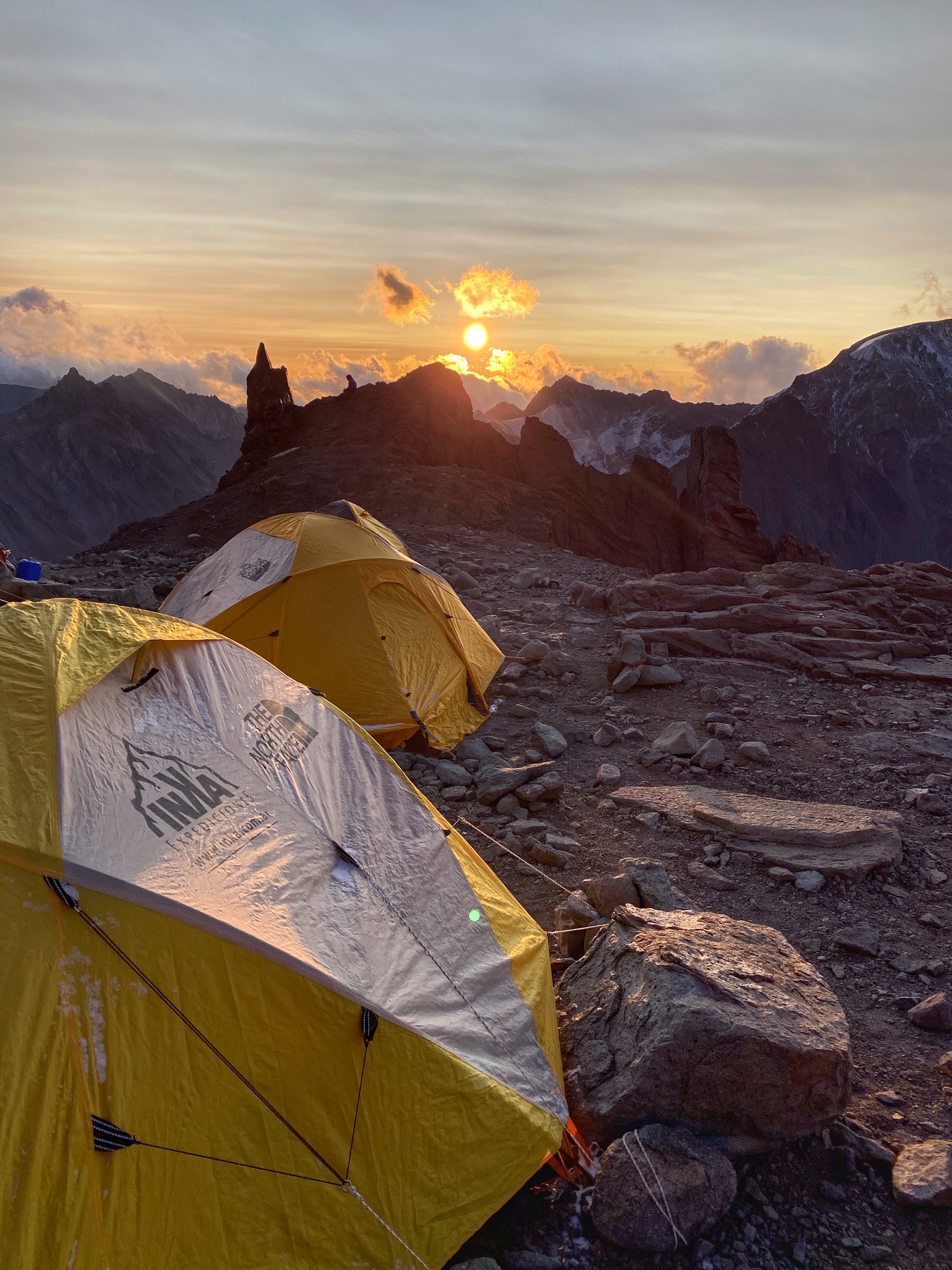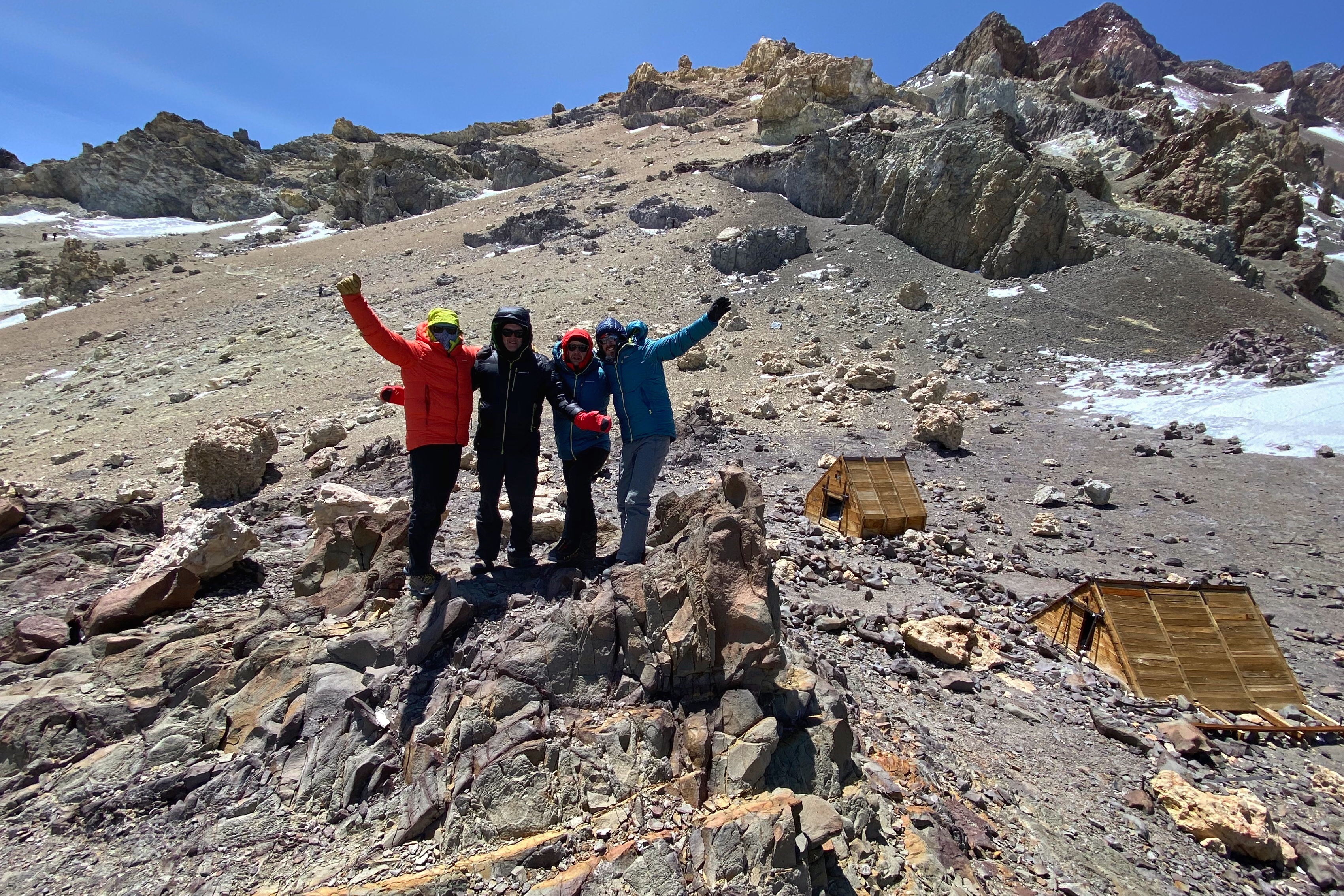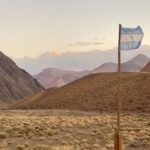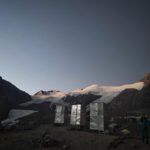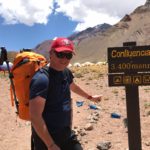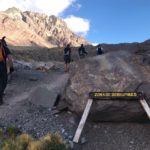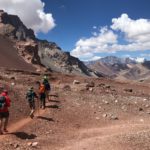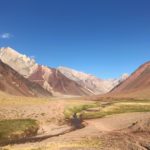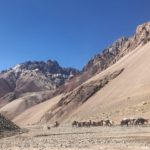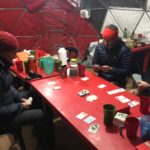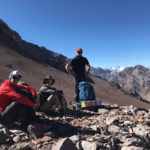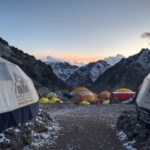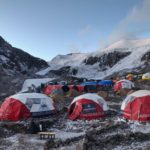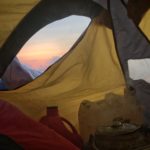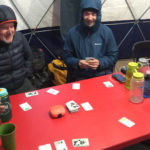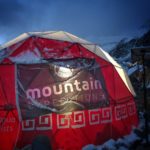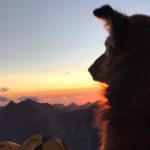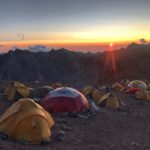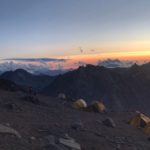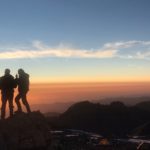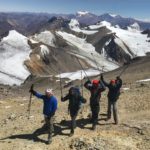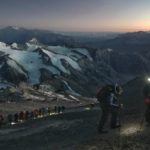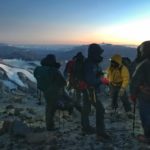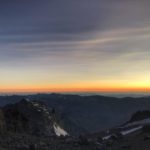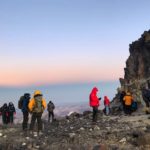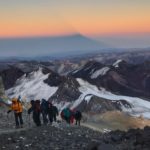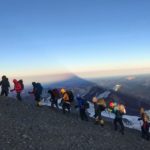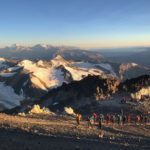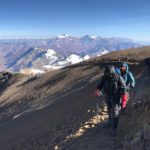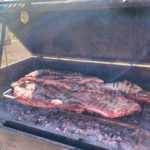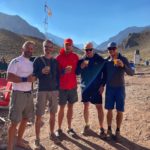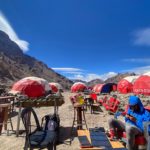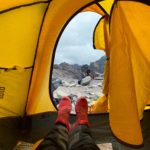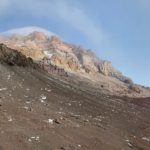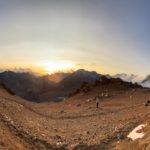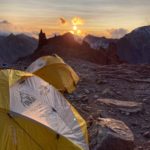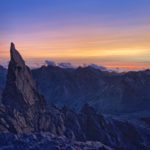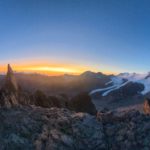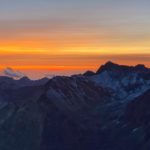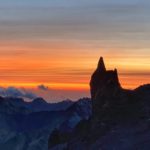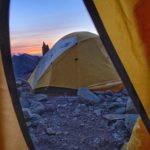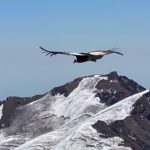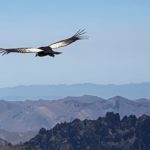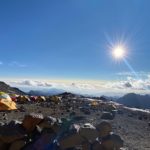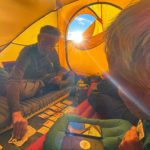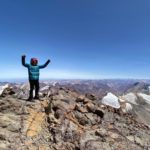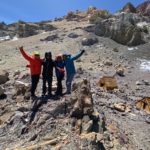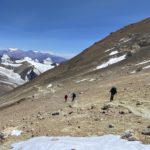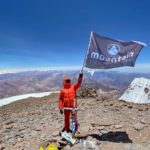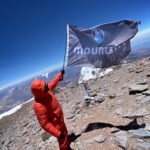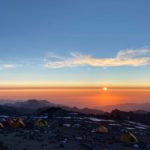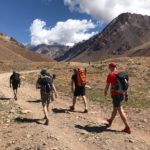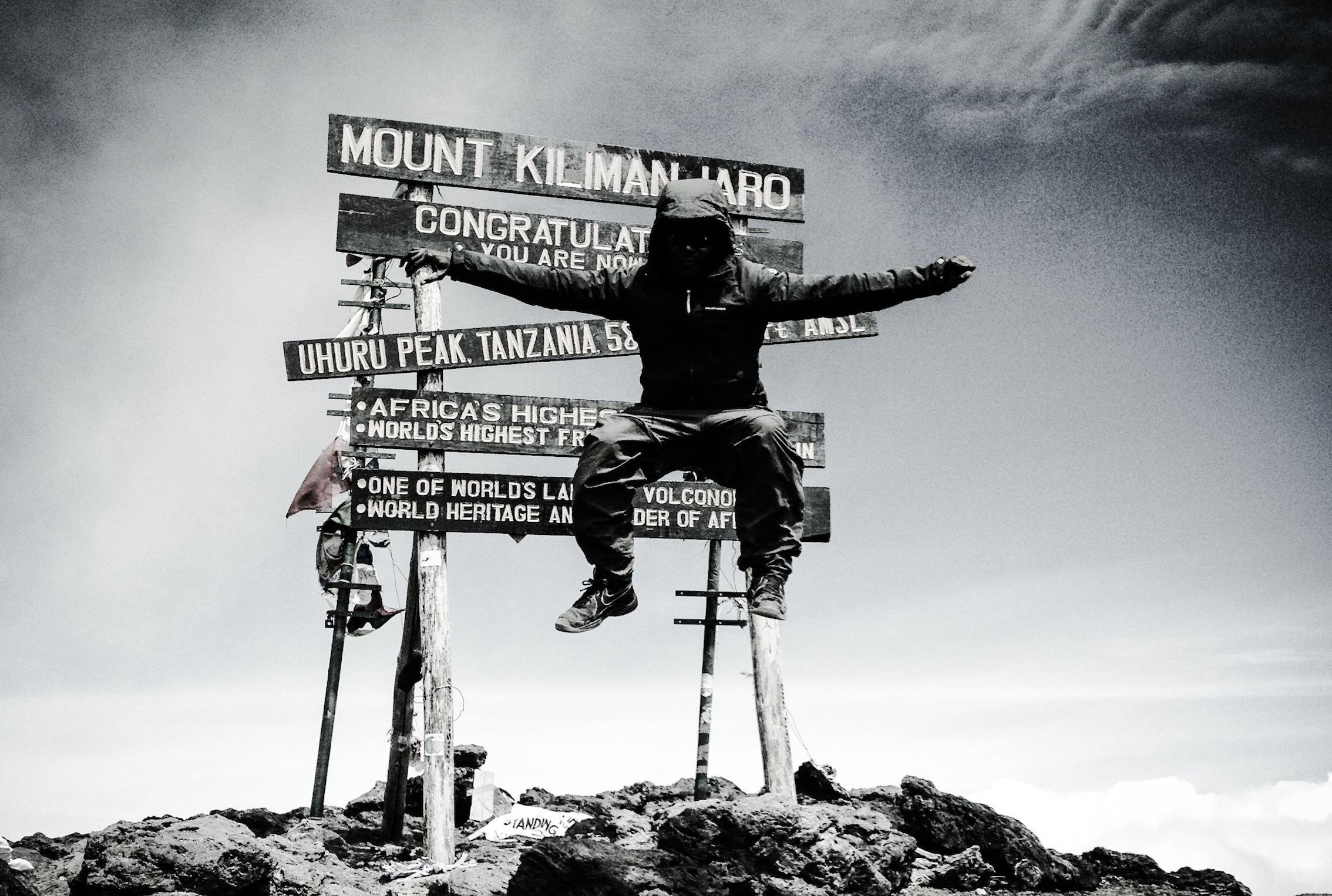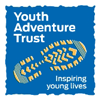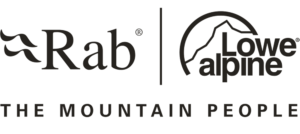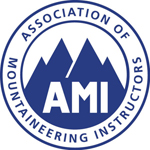Overview
Aconcagua at 6,962m is the highest mountain in both the western and southern hemispheres. It is also the second highest of the world famous 7 summits!
Situated in Argentina, close to the border with Chile on the spine of the mighty Andes we start our expedition in the bustling city of Mendoza. Once we’ve obtained our permits we head out into the mountains and begin our approach from the south, following the valley of Rio Horones to Aconcagua. This beautiful relaxed trek circles the western flank of the mountain and after a few days we arrive at the Plaza de Mulas base camp (4,365m). From here we gradually gain height and acclimatise well, over a number of rotations before preparing ourselves to make an attempt at the summit!
Organised and lead by Mountain Expeditions
Mountain Expeditions are expedition specialists – simply put we love organising and delivering world class expeditions. We understand that joining any of our expeditions is a big deal, so we try and make sure everything is perfect from start to finish.
UK Expedition Leader
Mountain Expeditions employ a small number of the UK’s most experienced High Altitude Expedition Leaders and we will always send a UK Expedition Leader to facilitate your expedition. All of our leaders are chosen on their individual merits which we base on their mix of vast mountain experience, interpersonal skills and of course, qualifications.
Local Mountain Guides
With all our expeditions we partner with the very best local in-country agencies who shares our ethos of delivering outstanding expeditions. We believe that a combined leadership team built of a UK Expedition Leader and highly experienced local guides is the strongest and most successful way to deliver our expeditions. For Aconcagua, a local guide will be with the team throughout the entire expedition and, if ratio’s require them, additional local guides will be used during the summit rotation.
Fully supported by local cooks, porters & guides
The truth behind organising and leading worldwide expeditions is that you need an excellent local in-country agent to work with. Over the years Mountain Expeditions have developed a long standing relationship with our local crews and the added value of our friendly and efficient local staff never goes unnoticed – we know it makes a big difference to your experience. Our local team are a huge part of your experience and make all the difference on the mountain.
Small teams & a personal approach – maximum 8
On big mountains like Aconcagua we don’t believe leading Open Expedition teams of 10+ members is good practice and it certainly doesn’t offer a very personable experience! All our Open Expedition teams are capped at 8 resulting in a close knit, small team experience.
Very high summit success rate
We believe that our high summit success rate is down to a combination of smaller teams and using the most experienced High Altitude Expedition Leaders. This combination has shown time and time again that this is the safest approach whilst on the mountain.
21 day flexible itinerary with a 3 day summit window
Our itinerary has been chosen to make this trip the very best we believe it can be. We’ve built in plenty of rest days and climb high sleep low days to aid your acclimatisation, and of course there are some big days too! We have also built in a 3 day weather window to allow plenty of time to reach the summit.
A perfect non-technical high altitude peak
There are many reasons people climb big mountains and many reasons why you might choose to climb Aconcagua. Due to its low technicality, Aconcagua offers a realistic opportunity to summit a really big mountain without having years of experience. Please read our Trip Suitability section to find out more.
Accommodation: hotels & tents
Many of our expeditions start and finish in a bustling city in a really nice hotel or lodge. Maybe it’s first and last impressions that count or perhaps we just enjoy having nice accommodation when starting and finishing a trip but it’s what we do! On the mountain we make sure camp life is as comfortable as we can.
Trip Suitability
Although Aconcagua is a non-technical ascent, at just under 7,000 metres it is a long and extremely tough climb at high altitude – we’ve graded it C1 to reflect this (refer to the Difficulty Level tab for more details).
Aconcagua is a brilliant mountaineering expedition and an ideal next expedition for people who have climbed mountains like Kilimanjaro, Mera Peak & Elbrus. Previous experience of using ice axes and crampons in winter conditions would be an advantage, but it isn’t essential.
In preparation for any mountain expedition, we offer Expedition Specific Training courses in both summer and winter. This is a great chance for you to spend time in the UK mountains with an experienced Expedition Leader and learn some new skills, getting better prepared for you next big expedition objective. If you have booked on to an expedition with us already, then we offer a 10% discount on these courses.
If you are unsure if your experience is suitable for Aconcagua, please don’t hesitate to Contact Us and we’ll discuss it with you in more detail.
Itinerary
The itinerary below is intended as a guideline only, although every effort will be made to adhere to it, changes may be forced upon it by weather conditions, transport failure or other unforeseen events. You should be prepared to be flexible where necessary.
You can download the itinerary as a PDF here.
Day 1: Fly to Mendoza and overnight in hotel
On arrival into Mendoza Airport you will be met and transferred to our hotel. A free day to rest after the flight. Evening group meal.
Day 2: Mendoza to Los Penitentes.
After getting our permits to climb Aconcagua we then drive for about four hours to Penitentes, a small ski resort near to the entrance of the Horcones Valley. Here we will sort out our kit, splitting it into two loads, one of high altitude gear to go straight to Base Camp, and one to stay with you for the acclimatisation camp at Confluencia. We spend our final night in a hotel before the trekking begins in the morning.
Day 3: Trek to Confluencia (3,395m)
Today we walk to the campsite at Confluencia, following the big valley flanked by impressive scree slopes. Here you will also get your first views of Aconcagua. We spend two nights here in large fixed tents.
Trekking time 3-4 hours | Altitude gain: 440m.
Day 4: Acclimatisation trek to Plaza Francia (4,000m)
Today, we will take a acclimatisation trek into the Inferior Rio Horcones Valley to Plaza Francia (4,000m) and then back to camp at Confluencia (3,395m) adhering to the gold rules of acclimatisation to climb high and sleep low.
Trekking time 4-6 hours | Altitude gain: 605m.
Day 5: Trek to Plaza de Mulas Base Camp (4,365m)
Today we will leave to make our way to Plaza de Mulas, Base Camp (4,365m) which is a reasonable distance away. The first half of the trek is a gentle walk until the valley splits and becomes steeper before you reach Base Camp.
In base camp, you will meet the local staff, extra guides, cooks and camp assistants, who will be looking after you on the mountain.
Trekking time 6-8 hours | Altitude gain: 970m.
Day 6: Rest day in Plaza de Mulas Base Camp (4,365m)
We will take today as a rest day at Base Camp to acclimatise further before our first steps on the mountain tomorrow. It is an opportunity to take a small walk, play cards, drink tea and get to know the area.
Day 7: Climb to Canada Place, Camp 1 (5,000m), return to Base Camp (4,365m).
Today we will leave after breakfast to climb to Canada Place, Camp 1, which is on a spur protruding from the west flank of the mountainside. When we arrive at Canada place we will drop off some supplies and then descend back to Base Camp for the night.
Trekking time 4-6 hours | Altitude gain: 635m.
Day 8: Rest day in Plaza de Mulas Base Camp (4,365m)
We will take today as a rest day at Base Camp
Day 9: Plaza de Mulas Base Camp (4,365m) to Canada Place, Camp 1 (5,000m)
We will retrace our steps today to Camp 1, Canada Place (5,000) where we will stay the night, which is a great place to see and photograph the sunset.
Trekking time 3-4 hours | Altitude gain: 635m.
Day 10: Canada Place, Camp 1 (5,000m) to Nido de Condores, Camp 2 (5,559m) and return to Plaza de Mulas Base Camp (4,365m)
Today you will leave Camp 1 (5,000) after an early breakfast you head up to Nido de Condores, Camp 2 (5,559m). Passing a huge scree field, that descends from where the Canaleta, opens out. Onto a rising traverse, where you continue till you find the large flat area of Camp 2, Nido de Condores where we will drop off some supplies before descend back to Base Camp for the night.
Trekking time 5-7 hours | Altitude gain: 559m, Altitude lost on descent: 1,194m
Day 11: Rest day in Plaza de Mulas Base Camp (4,365m)
We will take today as a rest day at Base Camp.
Day 12: Plaza de Mulas Base Camp (4,365m) to Canada Place, Camp 1 (5,000m)
This time you leave base camp to begin moving up the mountain for your summit attempt! Retracing our footsteps to Canada Place, Camp 1. Having been here and higher already, you should settle readily to this altitude and awake well-rested, ready to move onto the higher camps.
Trekking time 2-4 hours | Altitude gain: 635m.
Day 13: Canada Place, Camp 1 (5,000m) to Nido de Condores, Camp 2 (5,559m)
Retracing our footsteps from Canada Place, Camp 1 (5,000m) to Nido de Condores, Camp 2 (5,559m). This time you should find it much easier as you have acclimatised to the altitude. We will spend the next 2 nights here.
Trekking time 3-4 hours | Altitude gain: 559m.
Day 14: Rest day in Nido de Condores, Camp 2 (5,559m)
We will take today as a rest day at Camp 2 to acclimatise further before we make our way to Colera Camp 3, tomorrow. There may also be a possibility to take a small hike and gain some additional altitude.
Day 15: Nido de Condores, Camp 2 (5,559m) to Colera Camp, Camp 3 (5,993m)
Today we will make our way to Berlin Huts, which are now derelict. We will be camping on a plateau at our Camp 3, Colera Camp just 300m away. From here, you have an excellent view of the mountain.
Trekking time 3-5 hours | Altitude gain: 434m.
Day 16: Summit Day – 3 Day Window (6,959m)
We have a window of 3 days to make an attempt for the summit. We wake early and leave at 5/6am. Travelling through rock, scree and over snow patches we will arrive at the Independencia Hut at 6,377m. Then we will cross the grand traverse at the head of the scree field to the bottom of the Canaleta. A climb up this leads us to the summit ridge. We will see fabulous views straight down Aconcagua’s South face and across the entire Andes mountains.
After we celebrate reaching the summit, we will descend to Camp 3, Colera Camp.
Trekking time 10 hours | Altitude gain: 966m.
Day 17 & 18: Reserve Days for Summit attempts
Day 19: Colera Camp, Camp 3 (5,993m) to Plaza de Mulas Base Camp (4,365m)
Today we will make a rapid descent down scree slopes to base camp. We will be down by early afternoon, which gives plenty of time for a shower and to prepare our kit bags for the mules and our day packs for the long trek out tomorrow. Our final nights dinner on the mountain.
Trekking time 3-4 hours | Altitude lost on descent: 1,628m.
Day 20: Return to Mendoza and celebration dinner
Today you trek back through the Horcones Valley to Penitentes, where the transport meets us to take us back to Mendoza and our hotel for showers and a celebratory meal.
Day 21: Transfer to airport & trip ends
Today we say our goodbyes and you will be transferred to the airport for your return flight.
Map

Included
When you book with Mountain Expeditions, we want you to know exactly how much the trip is going to cost you, with absolutely no hidden extras or last-minute costs. Our fully inclusive land-only price includes almost everything from the minute you land at Mendoza International Airport until the time we drop you back off – even all your meals (no more awkward bill splitting – we take care of that!)
The following are included in our price:
- A UK Expedition Leader who has extensive high altitude experience
- A local Mountain Guide and assistant summit guides*
- Return in-country airport transfers
- All in-country meals – including our celebration meal!
- 3 nights hotel accommodation: 2 nights in Mendoza, 1 night in Los Penitentes
- 17 nights camping
- Mules to carry your personal gear to Basecamp & back (max. 30kg)
- Porters to carry group equipment to High Camps
- All group equipment (tents, cookers, gas etc.)
- Showers in Confluencia Camp and Basecamp
- 60 minutes free Wi-Fi at Basecamp & 3 full charges of devices
You should also refer to the Not Included section.
* Guide Ratios – 1 Expedition Leader/Guide for every 4 team members between Basecamp and Camp 3, 1 Expedition Leader/Guide for every 3 team members from Camp 3 to the summit.
Not Included
The following are NOT included in our price:
- International flights to Mendoza International Airport (MDZ)
- Aconcagua climbing permit – $800 USD*
- Travel insurance
- Personal clothing & equipment – please refer to the Kit List
- Porterage above Basecamp of personal clothing & equipment
- Tips (US$150)
- Items of a personal nature – phone calls, laundry, room service, alcoholic beverages etc.
- Unscheduled hotels and restaurant meals e.g. if bad weather grounds flights or contingency days are not used
- Any additional costs associated with leaving the expedition early
* We’ve specifically chosen to keep this cost separate as we’ll go together to register and obtain our climbing permits in Mendoza. Please bring your money in cash in US Dollars.
Visas are not required for UK Citizens in Argentina. If your flight transits through the USA, you will need an ESTA visa.
Difficulty Level
All of our UK Courses & Worldwide Expeditions come with a suggested difficulty level to help you choose the correct one. For a full explanation of the Scottish Winter, Alpine and UK Rock Climbing grading systems, this blog explains them all – Grades Explained
Grading for UK Courses
With all our UK courses please refer to the Trip Suitability section for more specific details on course expectation and technical and physical levels required.
C1 – Intro Course: open to any level and ability
C2 – Intermediate Courses: previous experience of scrambling/rock climbing or winter mountaineering
C3 – Advanced Courses: previous technical summer or winter climbing experience
Grading for Worldwide Expeditions
With all our Worldwide Expeditions you should refer to the Trip Suitability section for more specific details on the expedition expectation and technical and physical levels required. If in any doubt please don’t hesitate to contact us.
Physical
A. Good basic fitness, as for UK hill walking and mountaineering. Average rucksack weight: 6-8 kg
B. Good cardio-vascular fitness which for most people requires some training, by running, hiking and perhaps some gym work. Average rucksack weight: 8-12 kg.
C. High level of fitness coupled with physical toughness and the ability to carry a heavy rucksack for long periods. Average rucksack weight: 12-18 kg.
D. As for C, but tougher. Climbs of this grade are exceptionally strenuous and some weight loss is inevitable. Train hard and arrive fit. Welcome to ask for advice if training specifically.
E. Hard physical effort at extreme altitude which requires thorough preparation based on your experience of previous trips. Comments for ‘D’ also apply. May cause long-term fatigue after the trip.
Technical
1. Low angle snow or straightforward scrambling on rocks. Ropes are not usually required. Previous climbing experience is not essential.
2. Ropes are used principally for glacier travel and low angle snow or ice slopes. Ice axe and crampon experience necessary.
3. Short, steep sections of snow or ice up to about 50 degrees. Previous snow and ice climbing experience of Scottish III/Alpine PD is essential.
4. Long, steep snow and ice slopes with short steps of very steep ice or low grade rock climbing. Good all-round climbing ability required to Scottish III/Alpine AD.
5. Very steep ice (Scottish III/IV or harder) or rock (Hard Severe or harder). Suitable for competent mountaineers who have climbed consistently at these standards.
In-country Safety
Government Advice
We support the British Foreign & Commonwealth Office (FCO) ‘Know Before You Go’ campaign and recommend that you have a good read of the FCO Travel Advice for Argentina.
24/7 Expedition Medical Advisors
We work very closely with two specialist Expedition Medical Advisors (EMA’s). If you have any concerns about how your health conditions may be affected whilst in the mountains with us, you are welcome to talk with our EMA’s prior to your trip – all you need to do is let us know and we’ll put you in touch. Whilst on expedition our EMA’s are contactable 24/7 to provide our leaders with advice or assistance during any arising medical situation.
Emergency Operation Procedures
We work very hard to ensure we have a clear plan for all eventualities that may arise during the expedition. Liaising with local agencies including mountain rescue means we adhere to local regulations, have a clear evacuation process and ensure all the ‘what ifs’ are covered.
Risk Assessments & British Standards
Whilst expeditions to big mountains have inherent objective risks, we do our very best to mitigate these risks as much as possible. Careful planning and thorough consideration of all aspects of the trip means that there are very few surprises. We take advice and guidance from the British Standards BS8848 publication as well as from our experienced leaders and local agents.
FAQs
Why do you cap the team at 8 members?
On big mountains like Aconcagua we don't believe leading teams bigger than 8 members is good practice as it doesn't offer a very personable experience. Sure, having bigger teams of 12+ would be more profitable for us but we prefer to keep the teams smaller and ratios and summit success rate higher.
I have climbed Kilimanjaro, am I ready for Aconcagua?
A difficult question to answer specifically as it depends on you and what other experience you have but probably. Aconcagua is a reasonable step up from Kilimanjaro but it could be just the expedition for you.
If you are unsure at all then please don't hesitate to contact us and we can chat about it.
Can I book a private trip?
Yes! If you have your own group or would prefere our 1:1 private expeditions then you can simply choose the dates that work best for you and leave the rest to us.
We will set up a trip for you on our website with your own dates and a private URL - your team can all join the expedition here.
If you have any questions about this option then please ask us!
Flights - What day/time should we arrive?
The dates stipulated for the expedition are your arrival and departure dates from Mendoza. You are welcome to arrive/depart any time on this day.
You will be met at the airport and transferred to the our hotel in Mendoza. The transfer back to airport at the end of the expedition is also included.
Once you have booked on to the trip - you can input your flight details in to the 'My Account' section.
Flights - Can I arrive on an earlier or depart on a later date?
You are very welcome to arrive earlier or depart later if you choose.
Once you have booked on the trip - you can input your flight details in to the 'My Account' section.
What insurance do I need for this expedition?
To join our expeditions it is mandatory that all members have insurance that covers helicopter rescue & evacuations.
There are many companies to choose from including: BMC, Snowcard, Ripcord, DogTag etc.
It is worth being aware however, that Global Rescue are the company that has an agreement with the local helicopter provider. This means that if you need to use it, instead of having to pay for the service (approx. US$1700) and then claim it back later, you won't have to do this.
For all the other additional services you might need, such as an individual transfer back, extra nights, hospital, medical attention, medicines etc. in all cases (even with Global Rescue), you will have to pay for it and keep all the receipts to be refunded later by your insurance provider.
Once you have taken out your trip insurance please input your details in to the My Details section within 'My Account'.
Why is the US$800 climbing permit not included?
We'll all go together to obtain our permits from the National Park Office In Mendoza. As we have to pay for these individually in cash in US Dollars we decided it was simpler if we removed this from the overall cost and each individual member brought their permit fee with them.
Please note - you do need to bring this with you as local ATMs are restricted to $100 withdrawals.
What do I have to carry on a typical day?
During the trek in, a light day pack will be all you require however on the upper mountain (above Basecamp) it is best to have a large expedition pack. Some days will be carry & drop days where we take up kit and supplies and drop them off at higher camps before descending. Other days will include moving up to a higher camp with all our kit - these day the packs will be big!
Top tip: If you have a really light day pack you can stuff this into your expedition pack to take to high camp and use for summit night.
What do I eat on the mountain?
The food is absolutely superb and is all freshly prepared on the mountain by our fantastic cooks. Generally you can expect 3 hot meals a day and 3 courses! We promise you will be very impressed with our cooks. Any special dietary requirements can easily be catered for – just let us know.
We would advise you to bring a few of your favourite snacks to have with you on the mountain too.
What if I'm vegetarian or have dietary requirements?
All you need to do is let us know your specific requirements and we will pass them on to our local cook team. They are very used to dealing with dietary requirements and whatever yours is, it wont be a problem at all.
I’m worried about slowing down the team?
Generally the pace at altitude is very slow and steady. Being slick and efficient in the mountains is the best way to move well, not rushing. You will need to be fit for the bigger days and for carrying bigger packs but if you are not particularly fast, that shouldn't be a problem at all. Feel free to give us a ring anytime to chat about this in more detail. A great option could be for you to spend a few days in the mountains with us as part of our Expedition Specific Training (10% discount for expedition team members)
What is the toilet situation?
At Basecamp there are a number of fixed toilets close to camp. However, on the mountain the National Park has a new clean mountain program so all human waste must be bagged and brought back down. The National Park gives us all the bags we will need for this.
Do I need any money on the mountain?
Maybe... if you would like to use the Wi-Fi at basecamp (after your 60 free minutes runs out) or charge your batteries (after you've used your 3 free charges) then you will need a few US$ to pay for these. There are also beers available at basecamp too.
Should I take Diamox?
Diamox is a drug that can help aid acclimatisation. If you are considering taking Diamox our advice is to do your research first, you should understand what it is and how it works and then visit your GP. Websites such as NHS Fit For Travel and MedEx are great sources of knowledge and are very informative.
What happens if I get ill and need to go down?
If a team member needs to descend this can be arranged quickly and easily. There are a number of options depending on where we are on the mountain and with 24/7 radio contact with our agent on the ground you are in safe hands on and off the mountain. You would always be accompanied by a guide.
What happens if I need to leave the expedtion early?
If you need to leave the expedition early we will help you all the way to the airport.
There are likely to be some additional fees incurred due to extra transport and hotels which would need to paid for by you.

